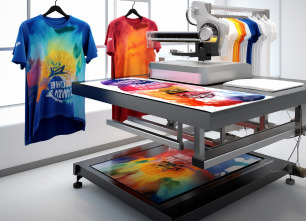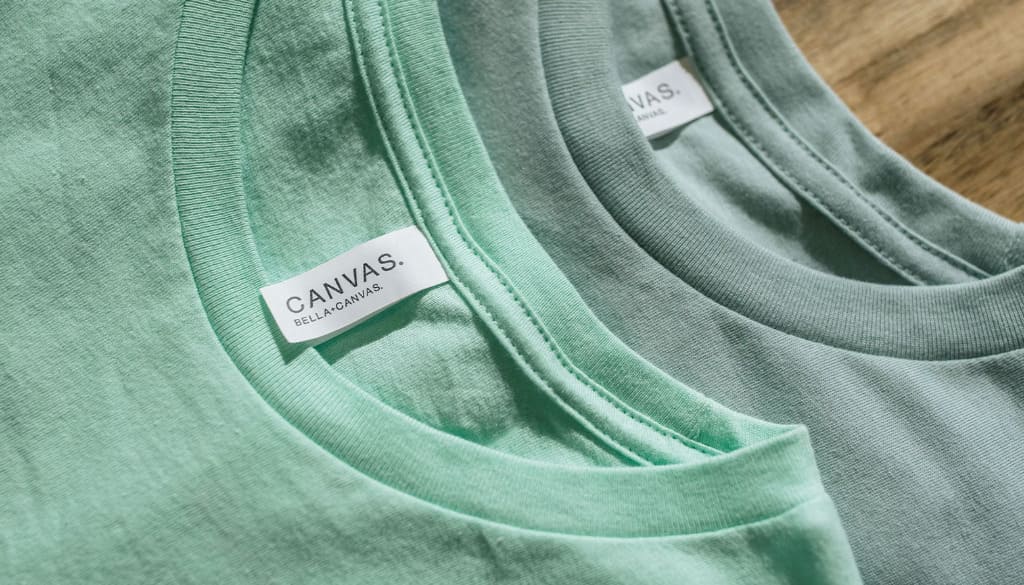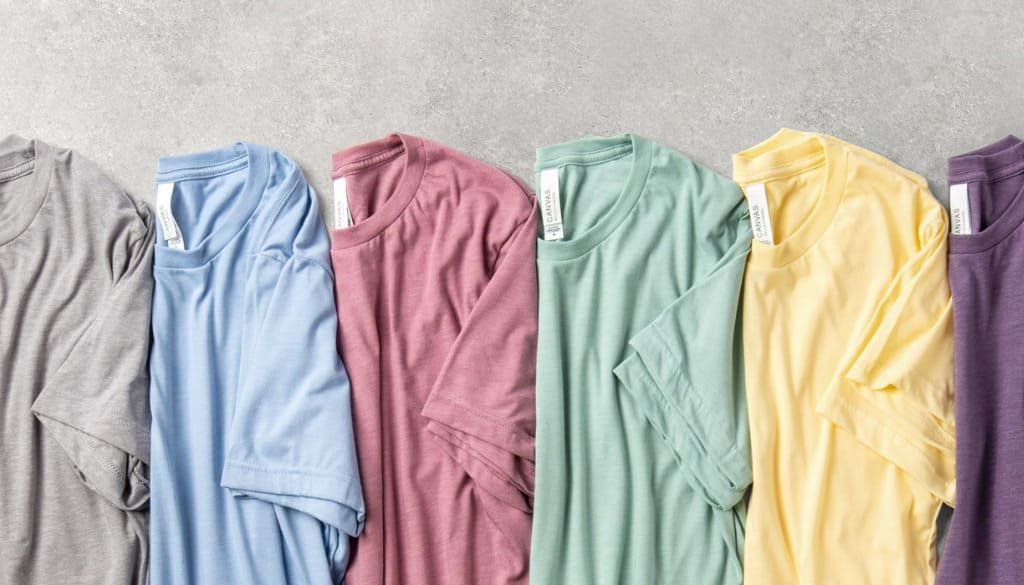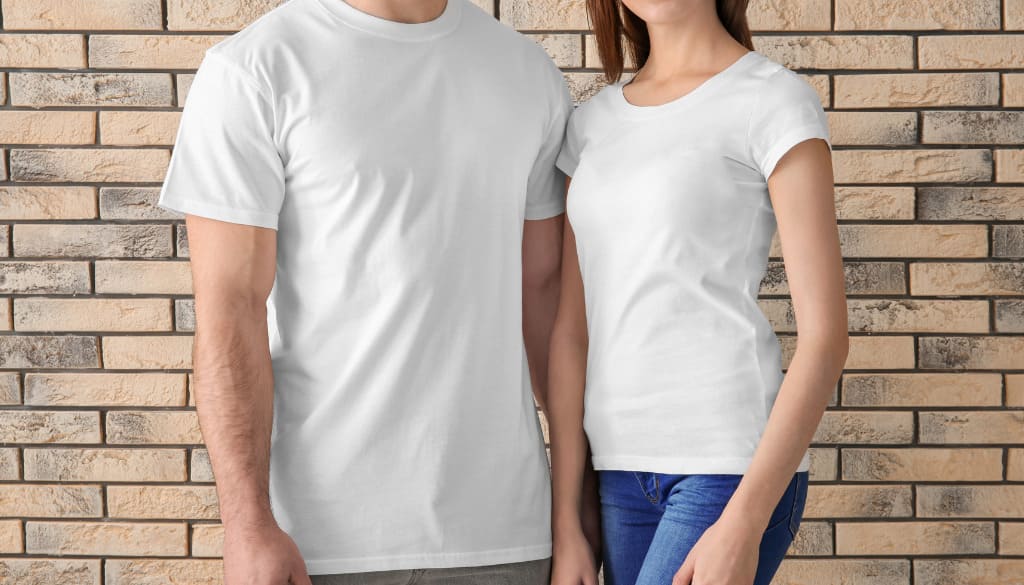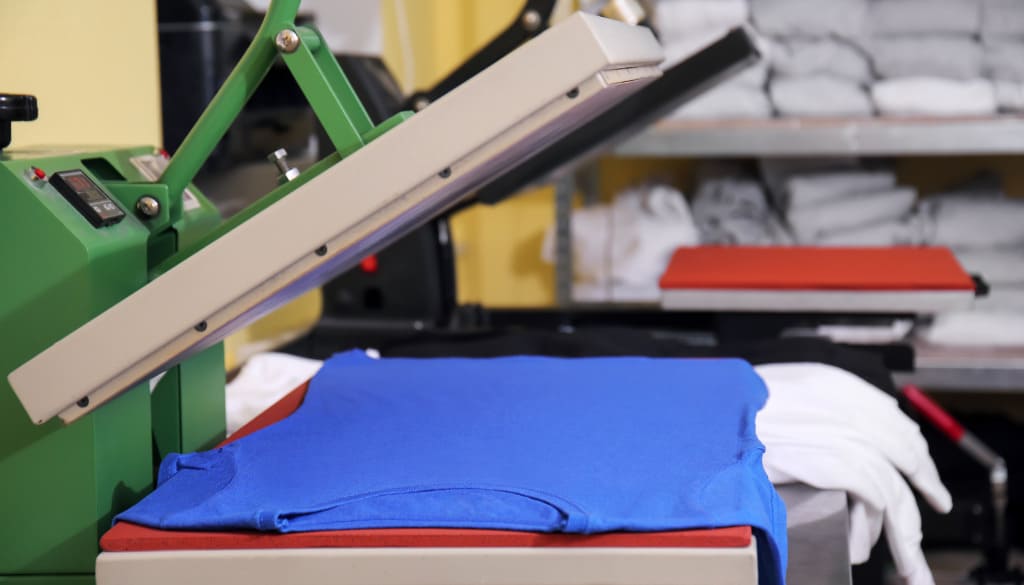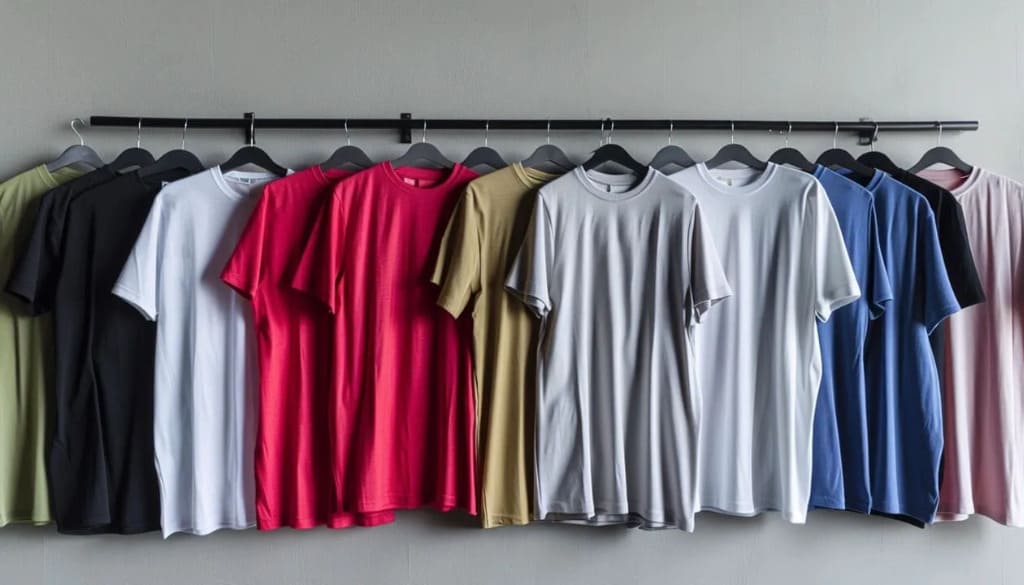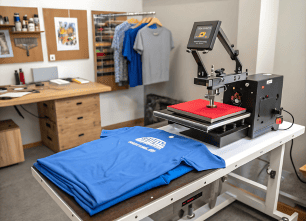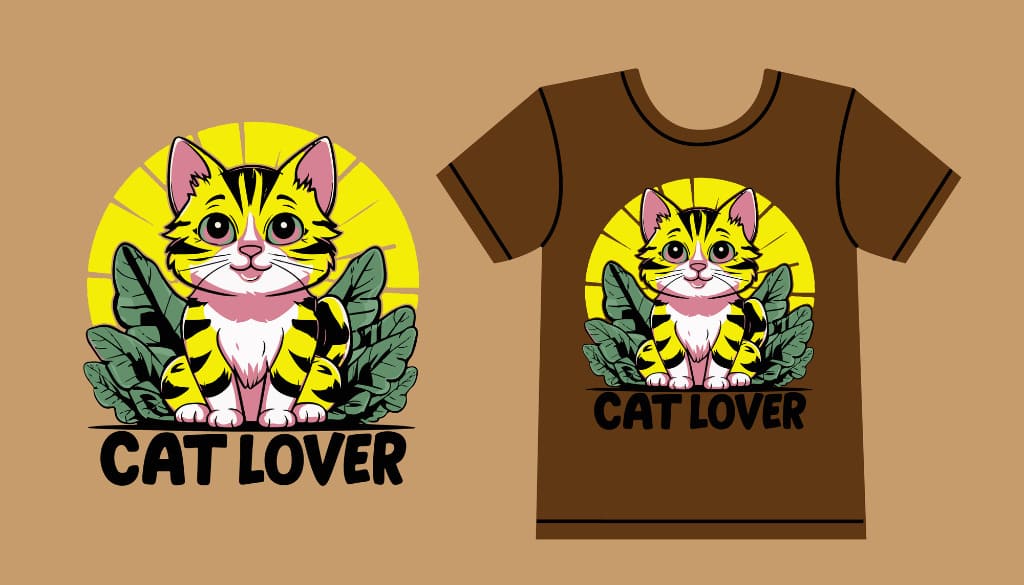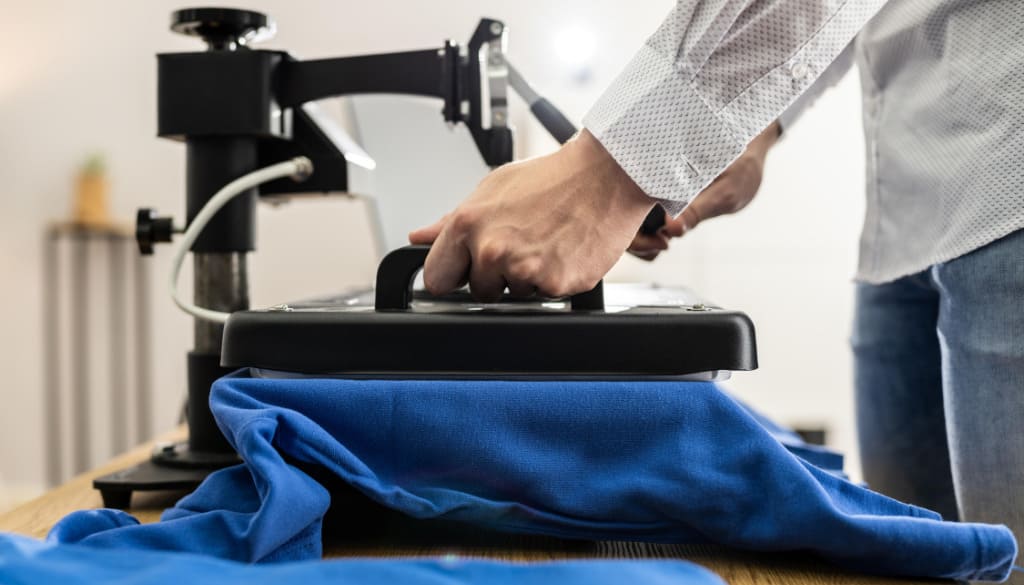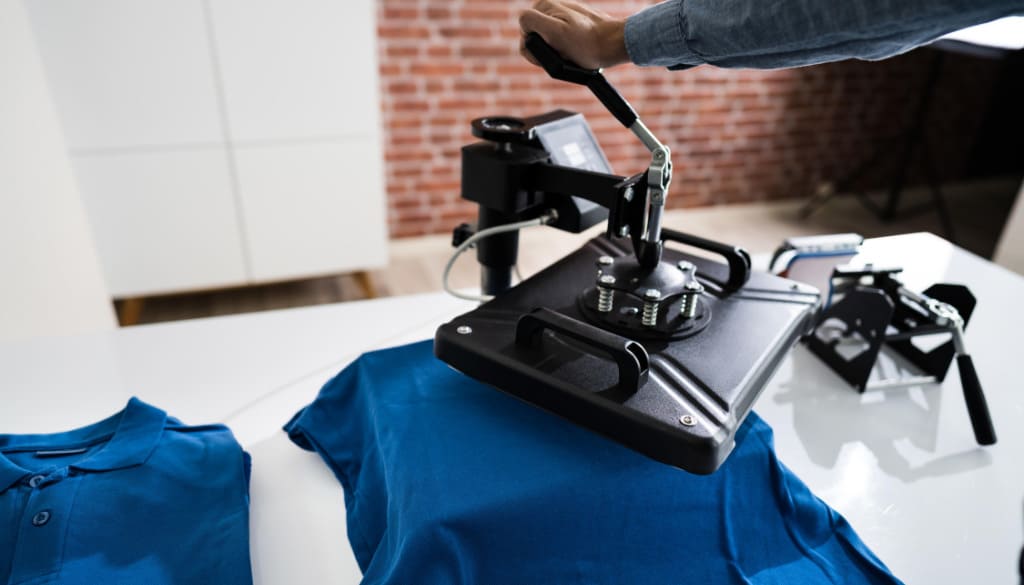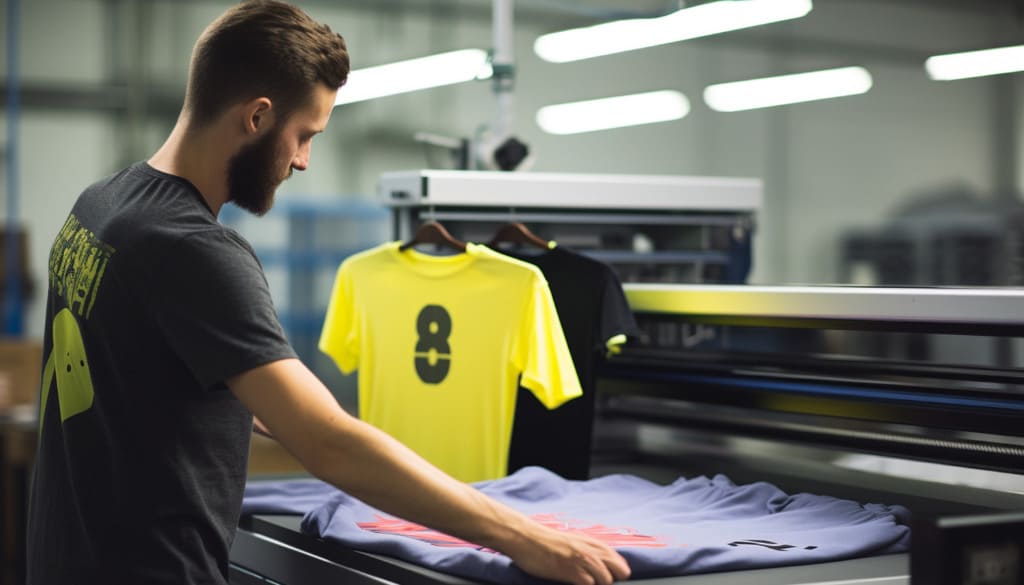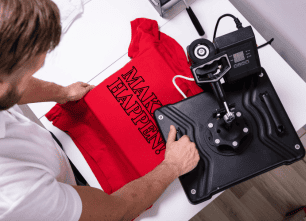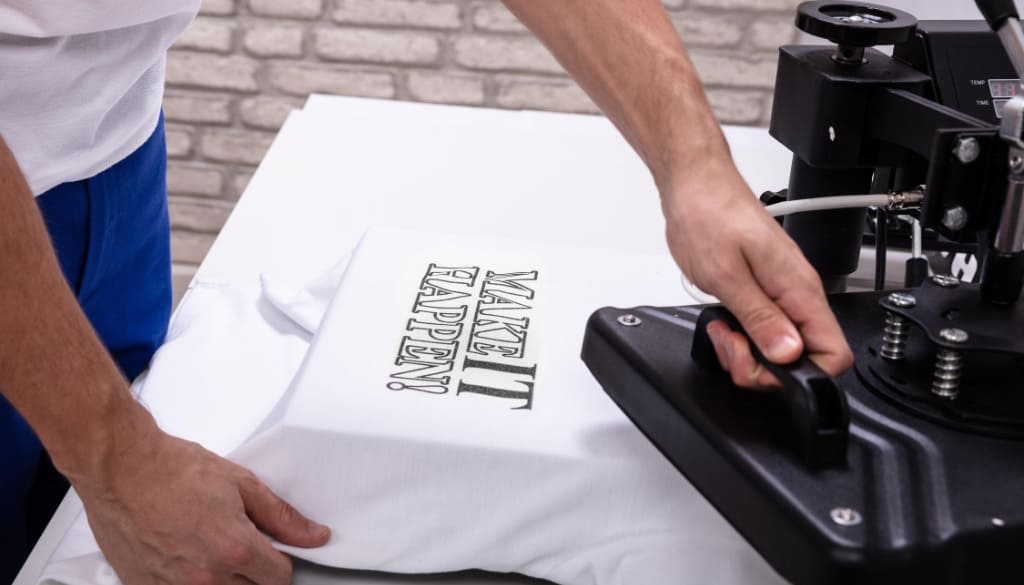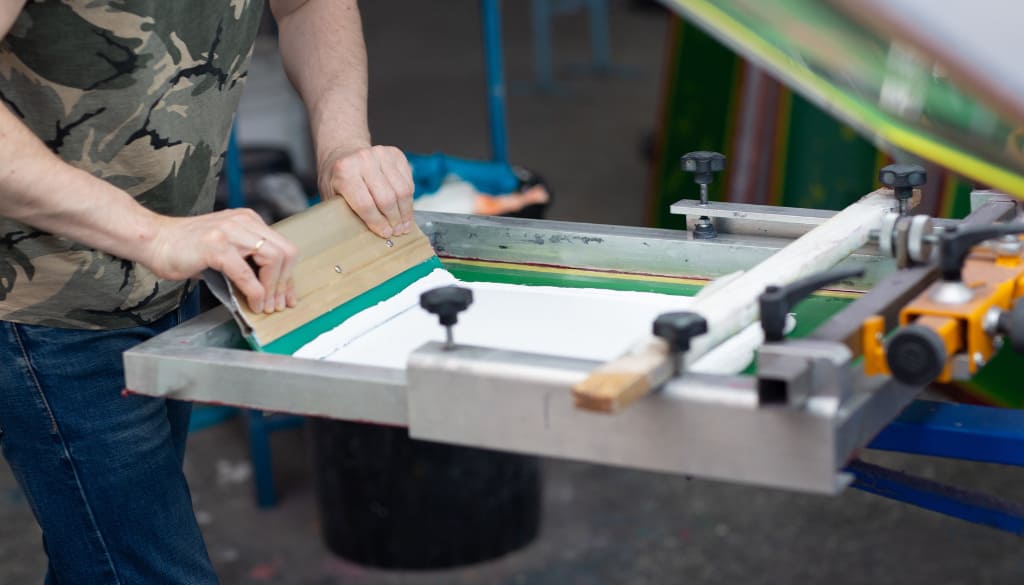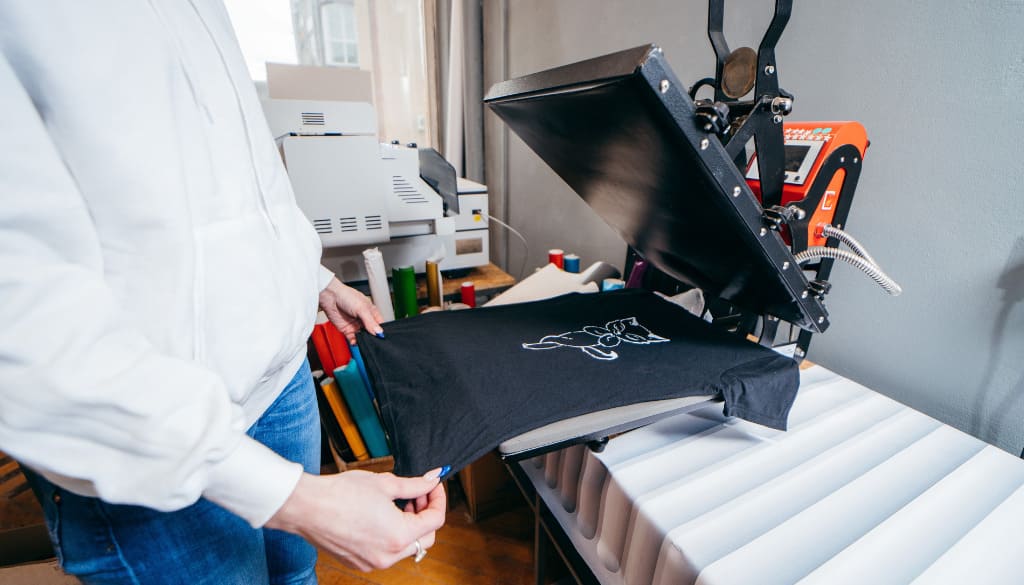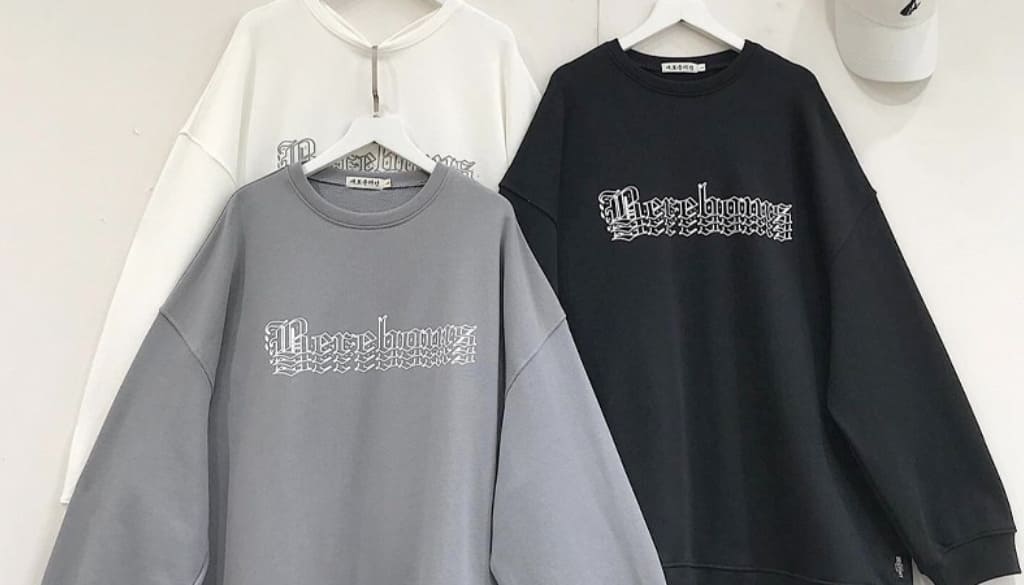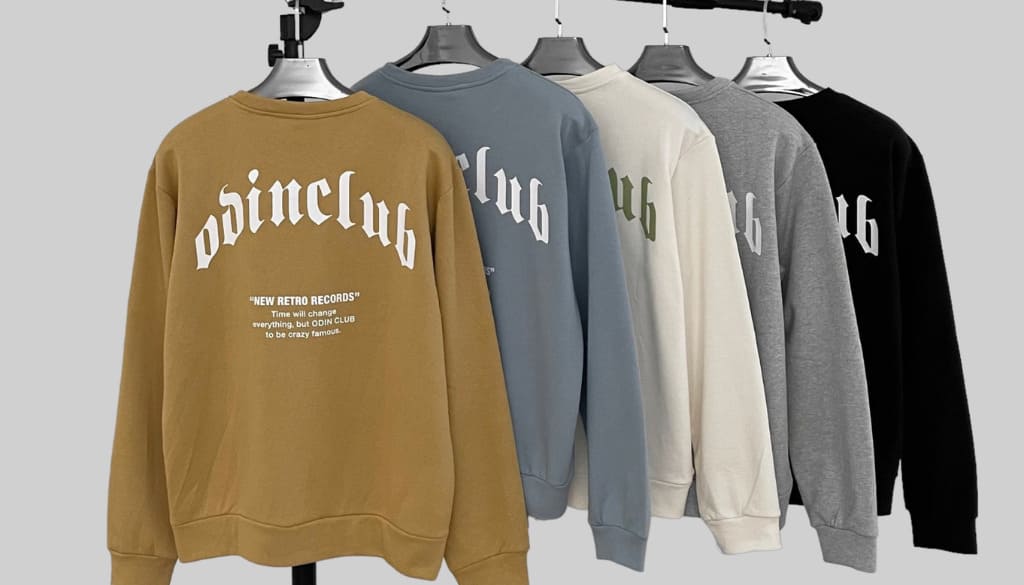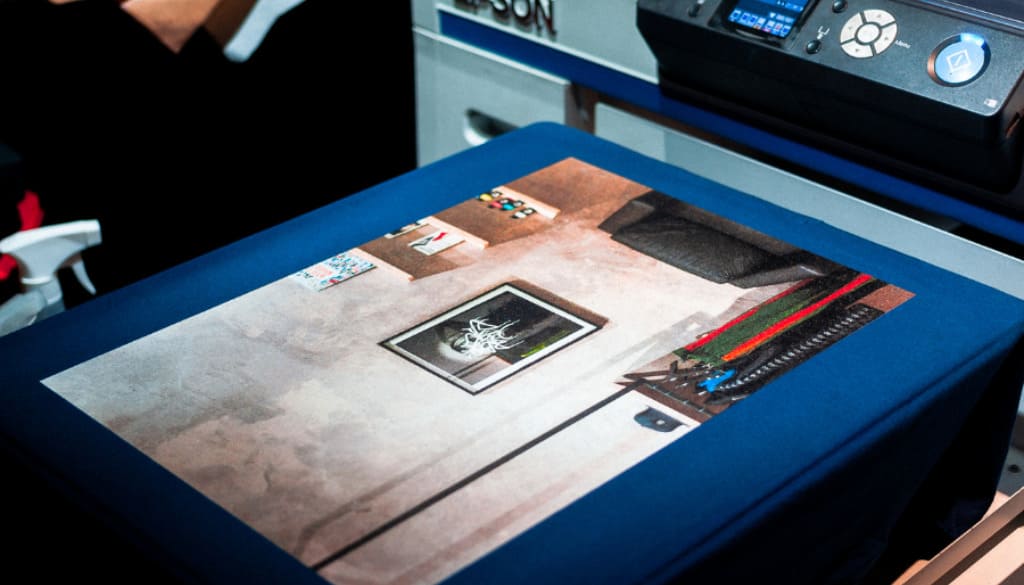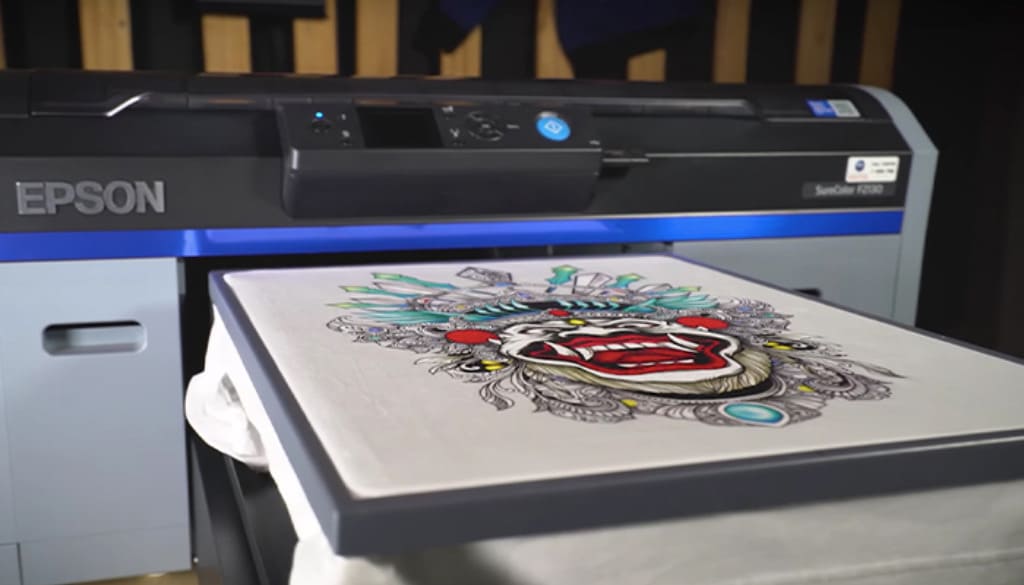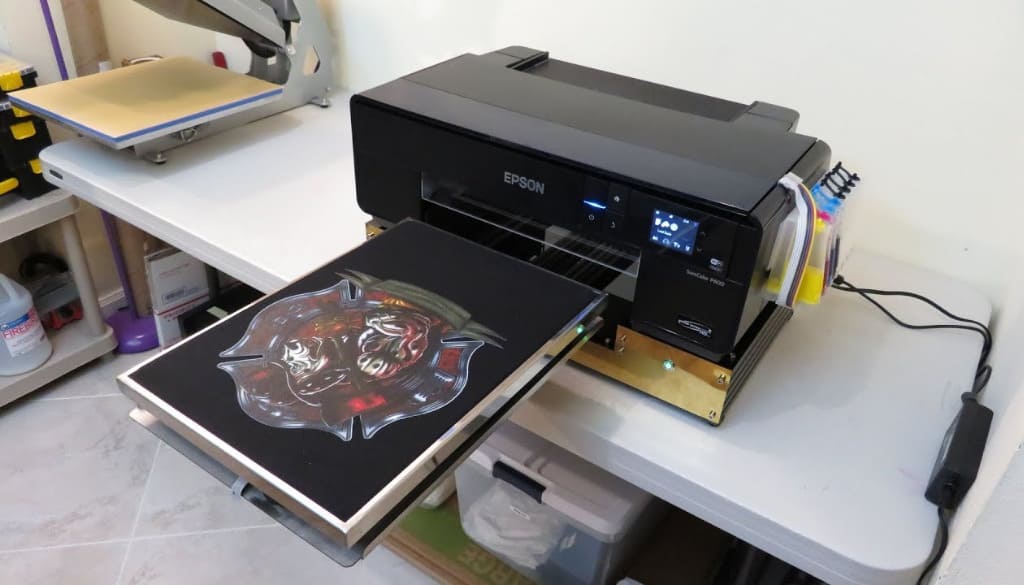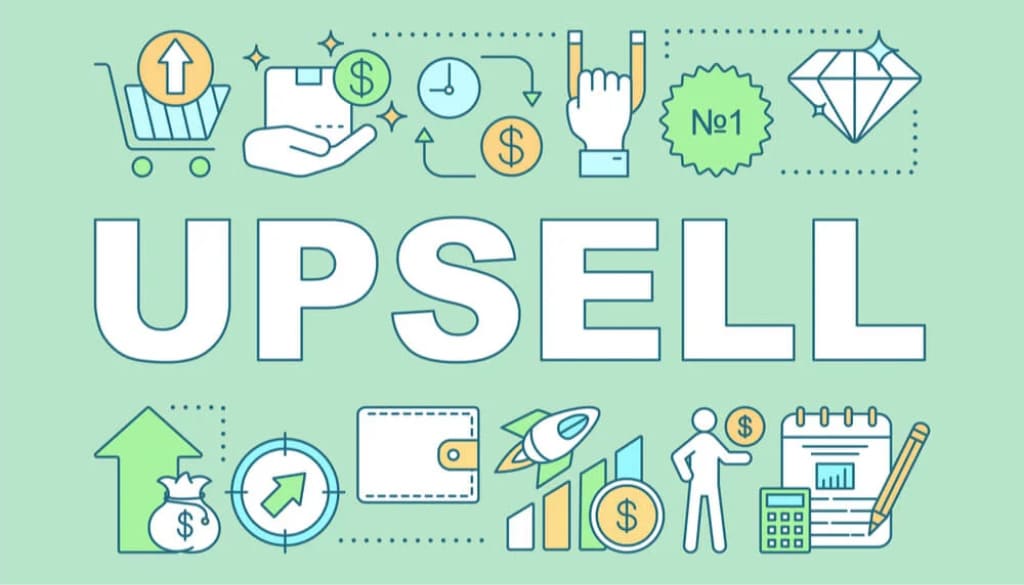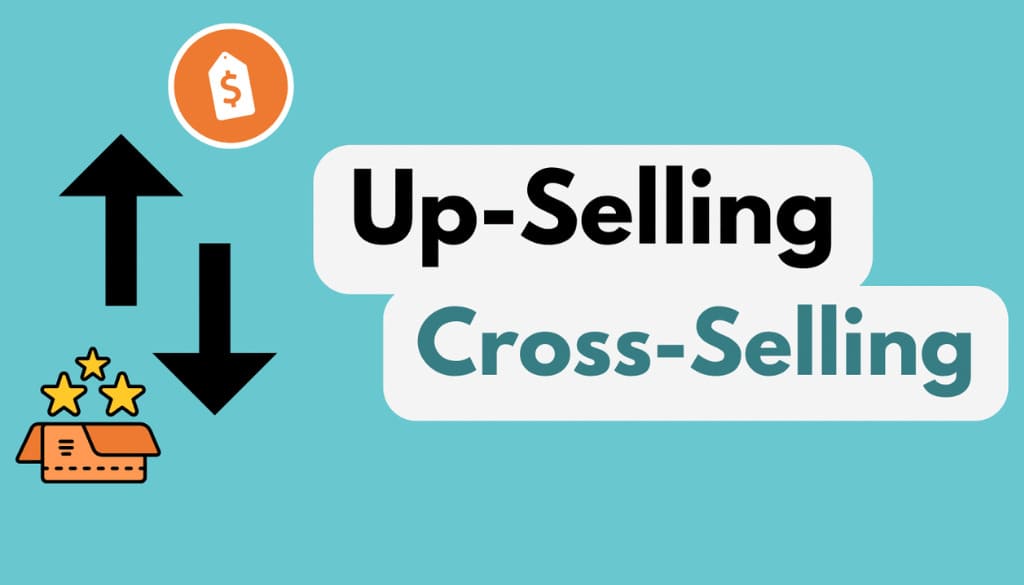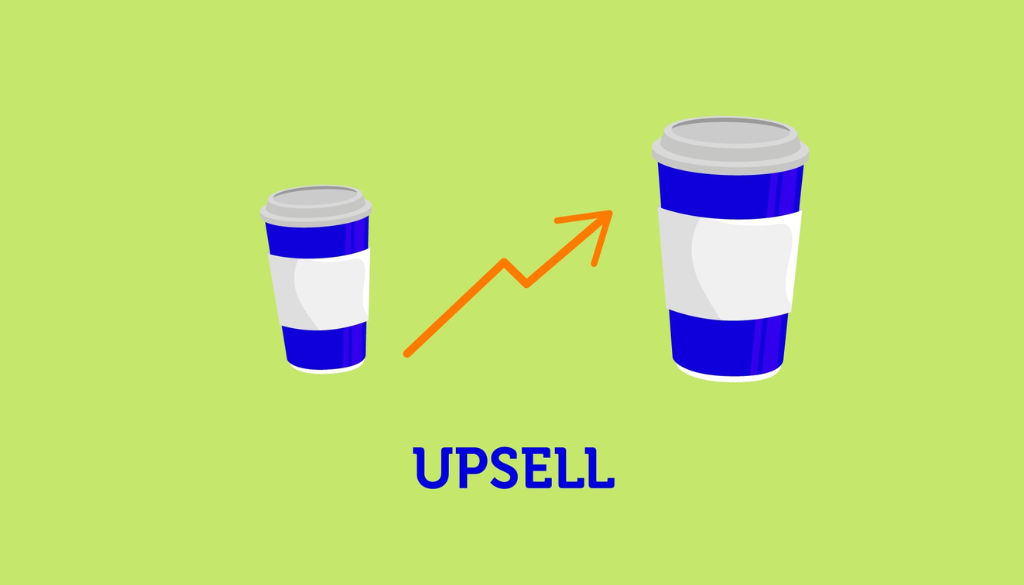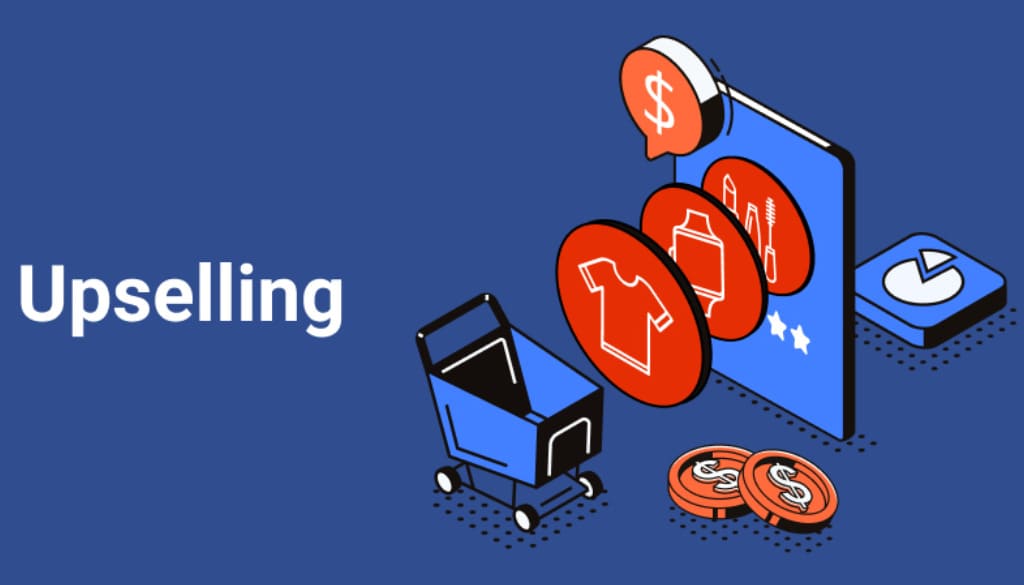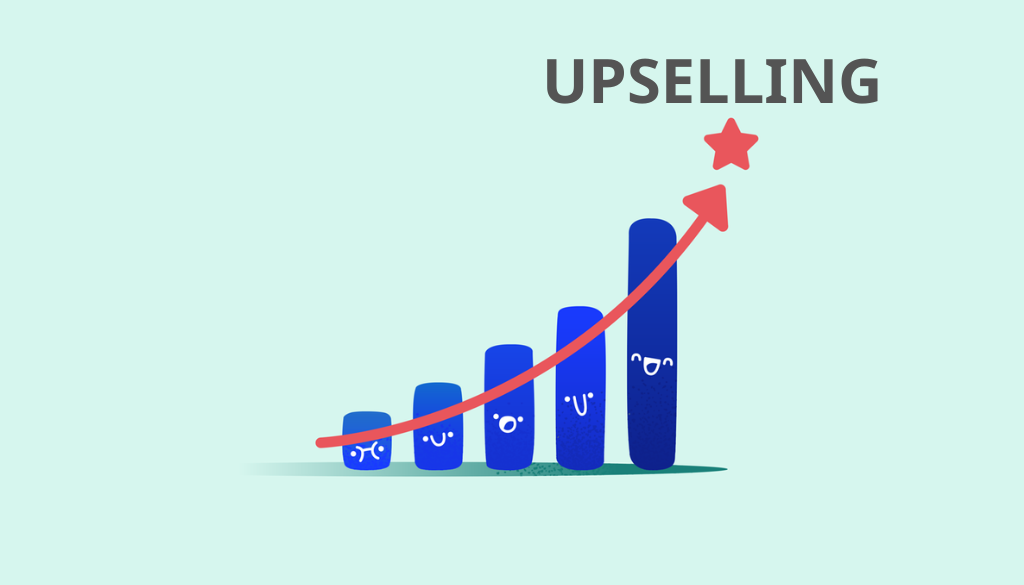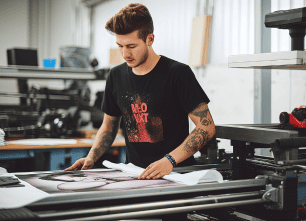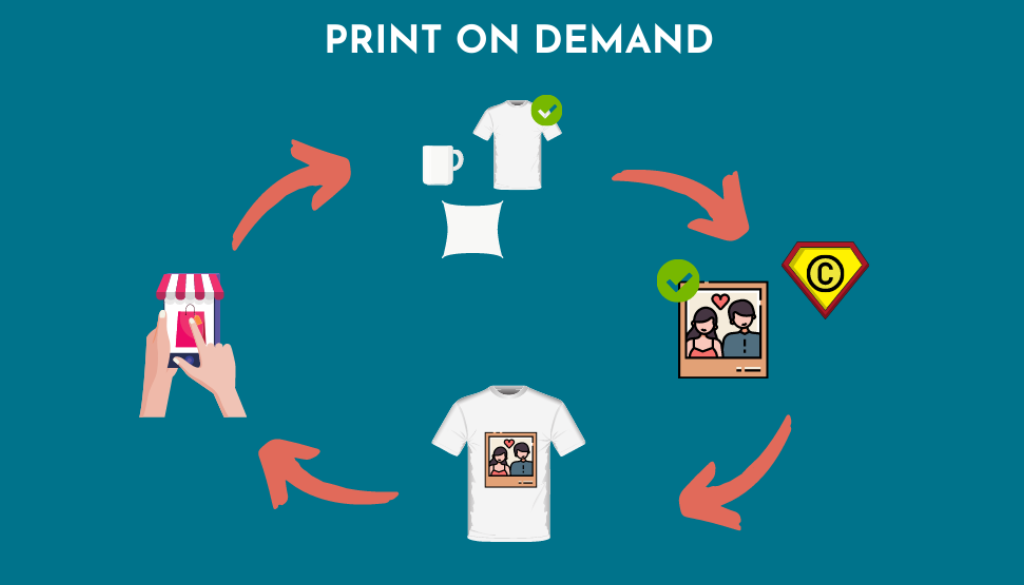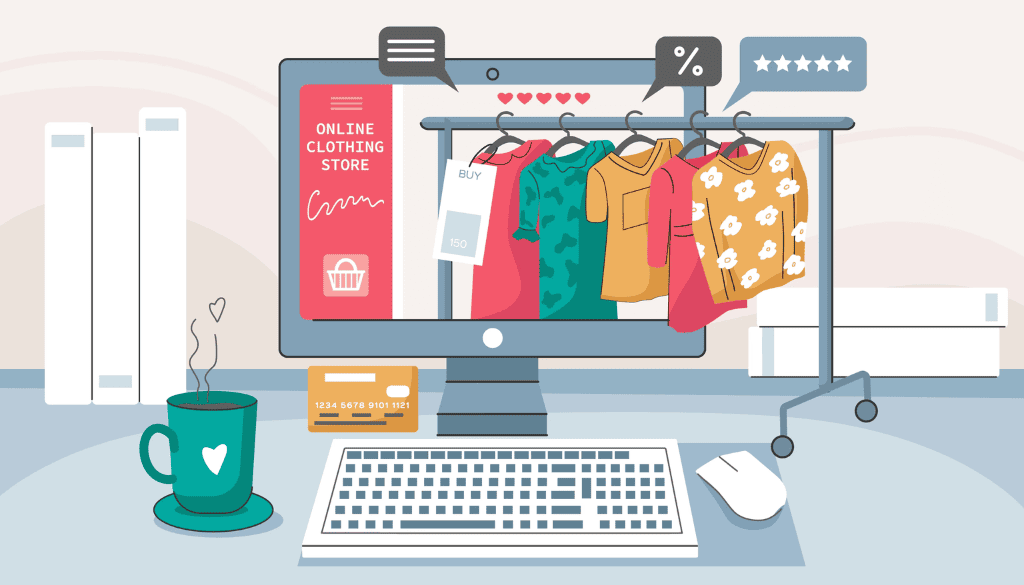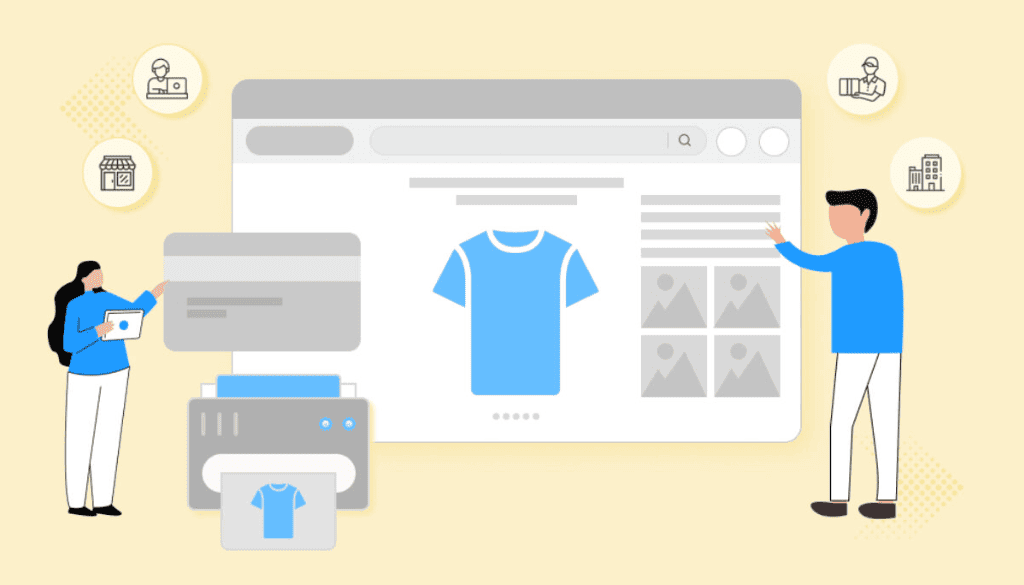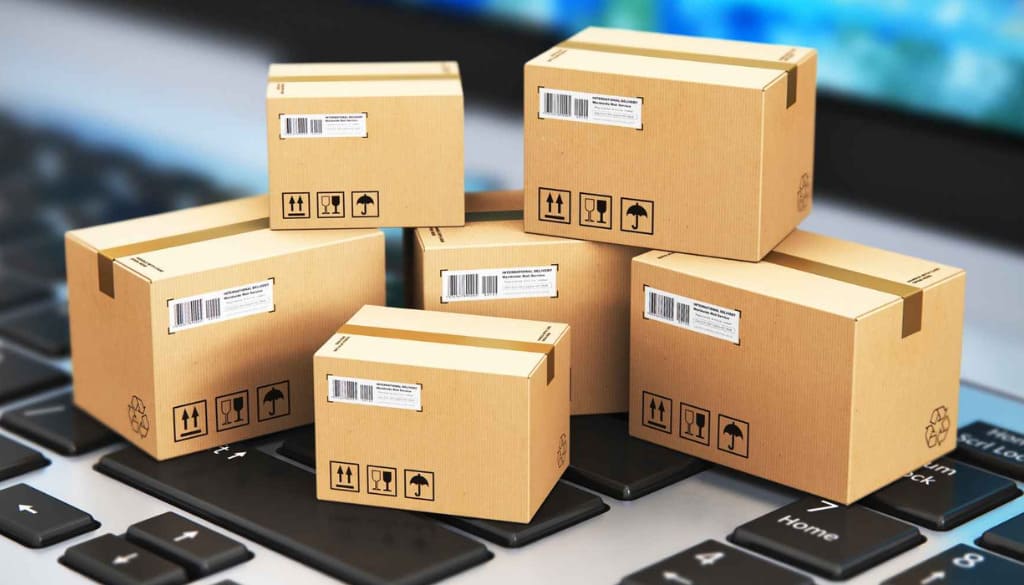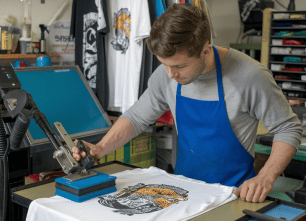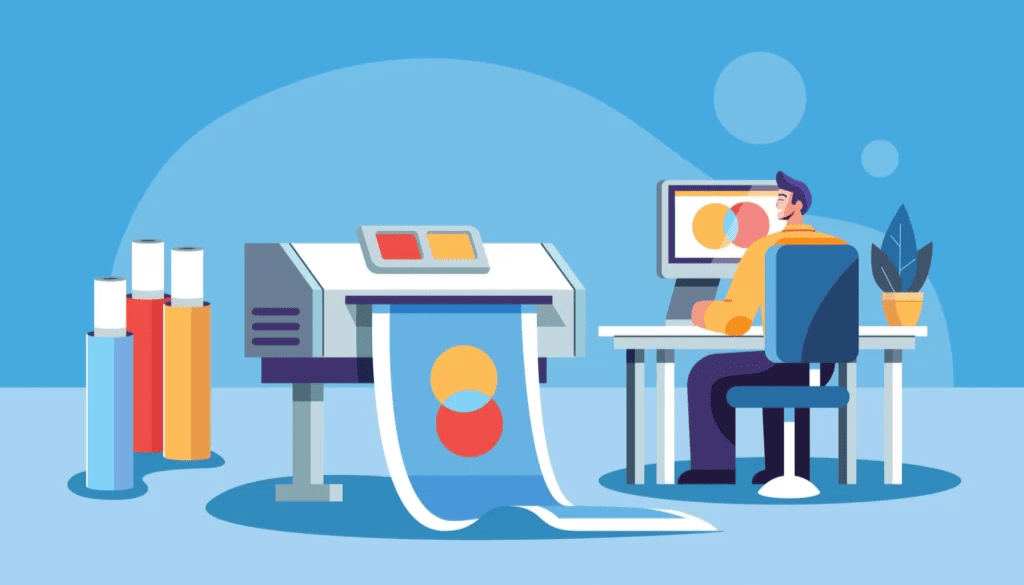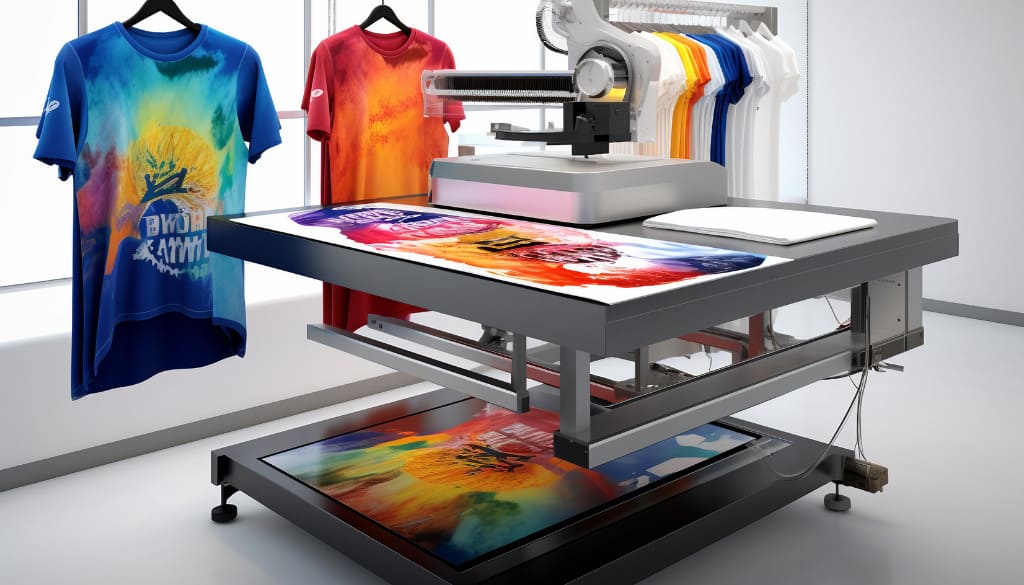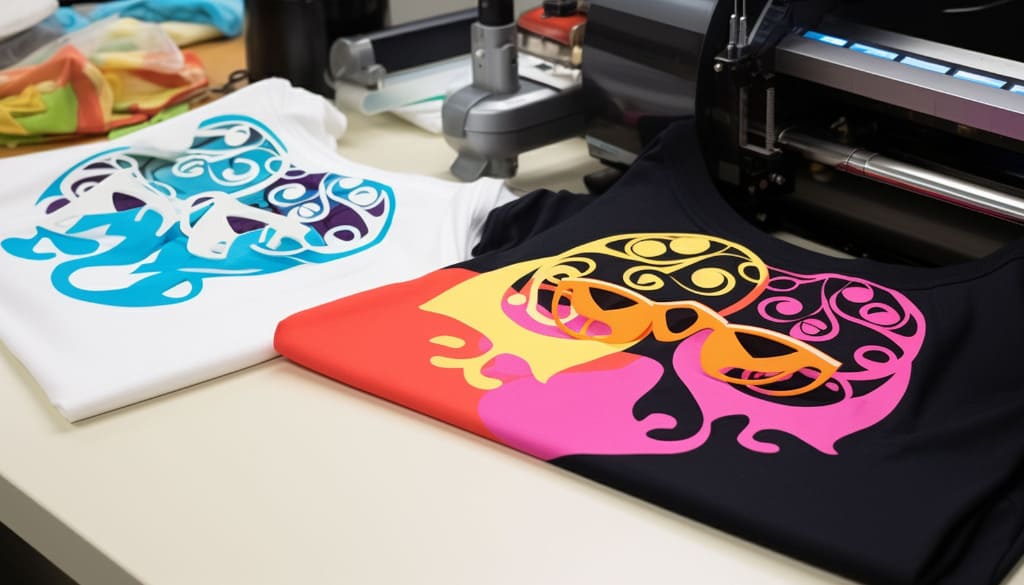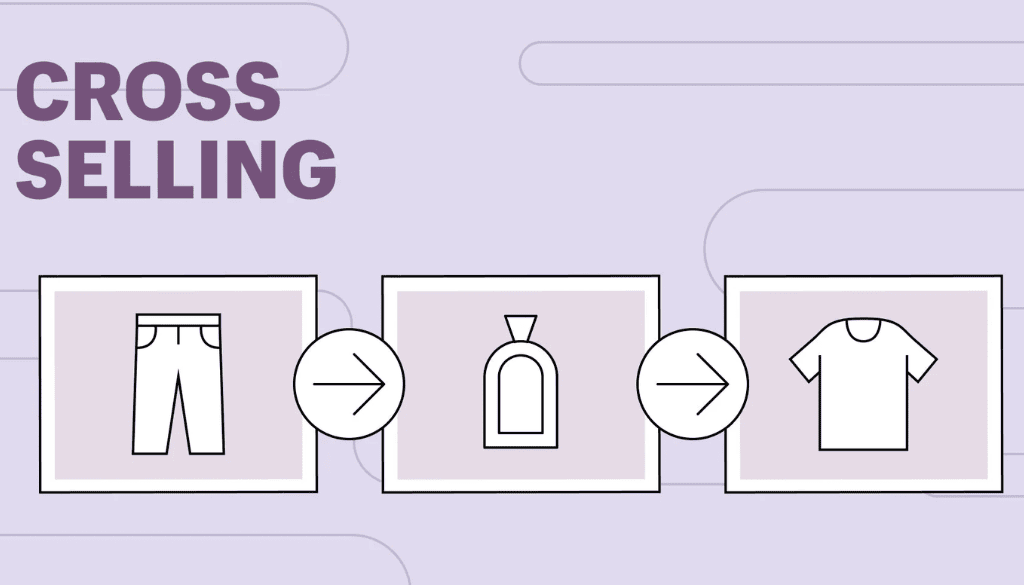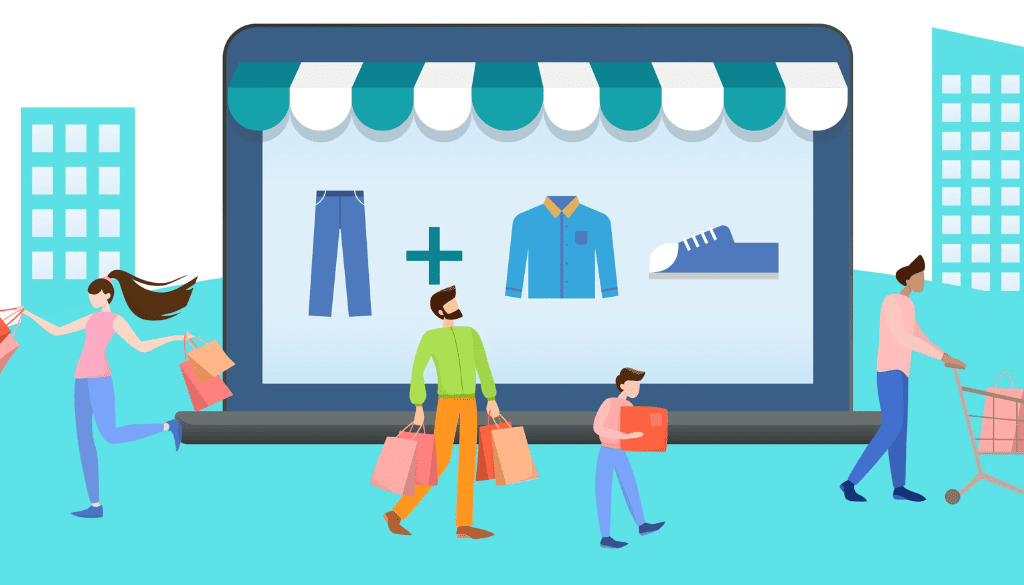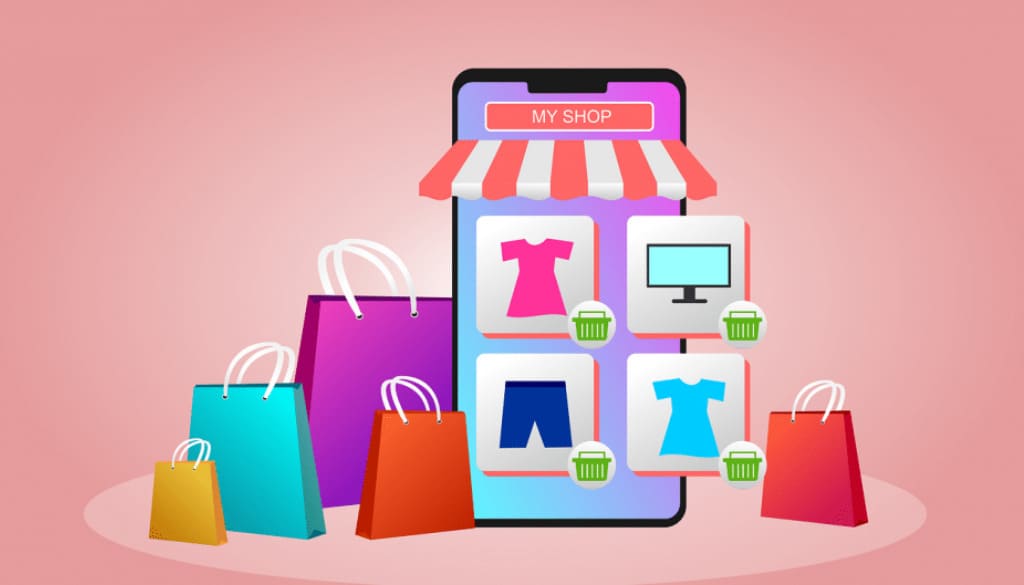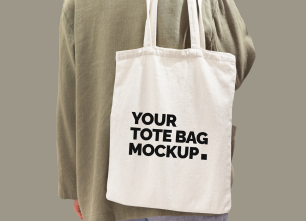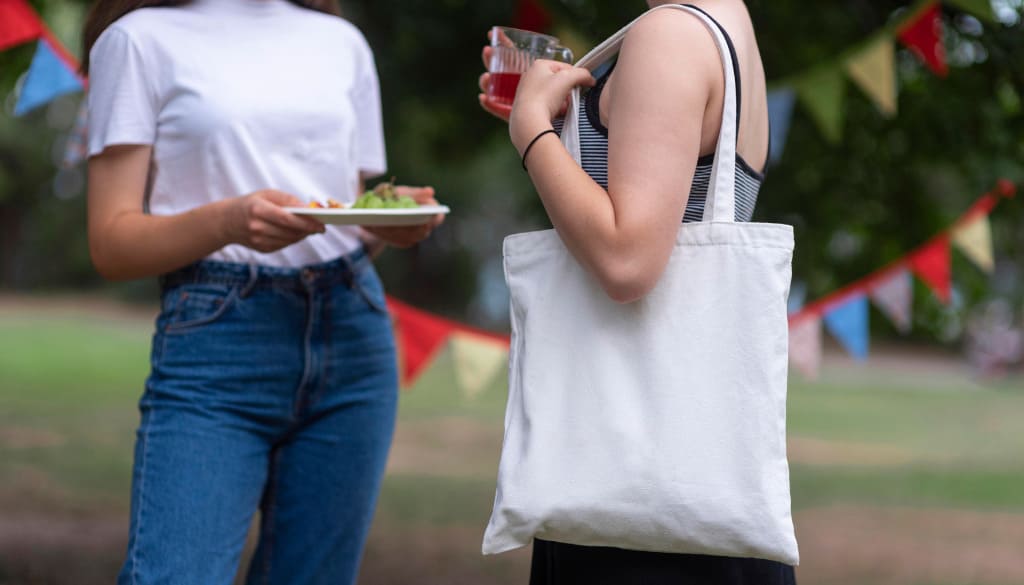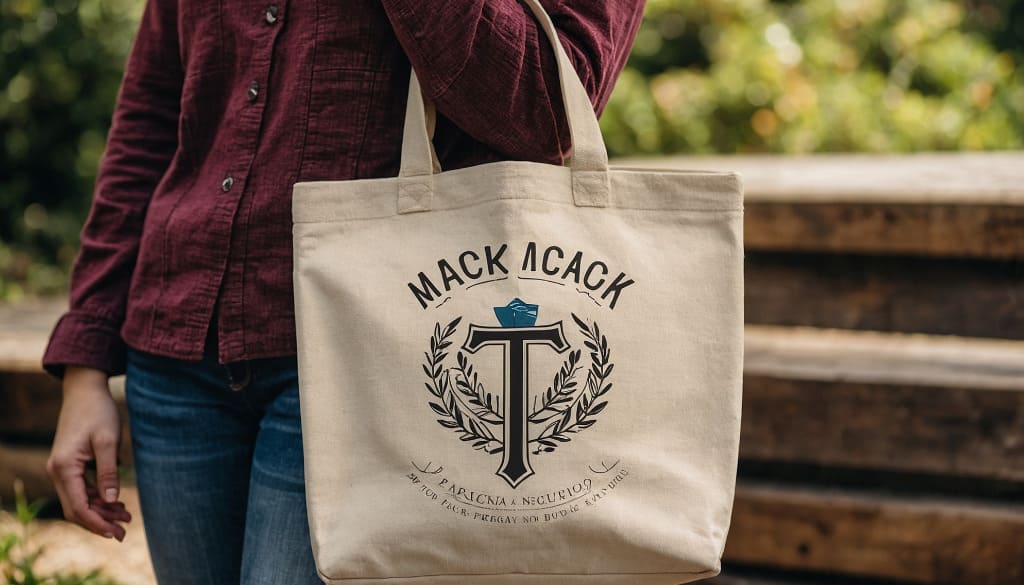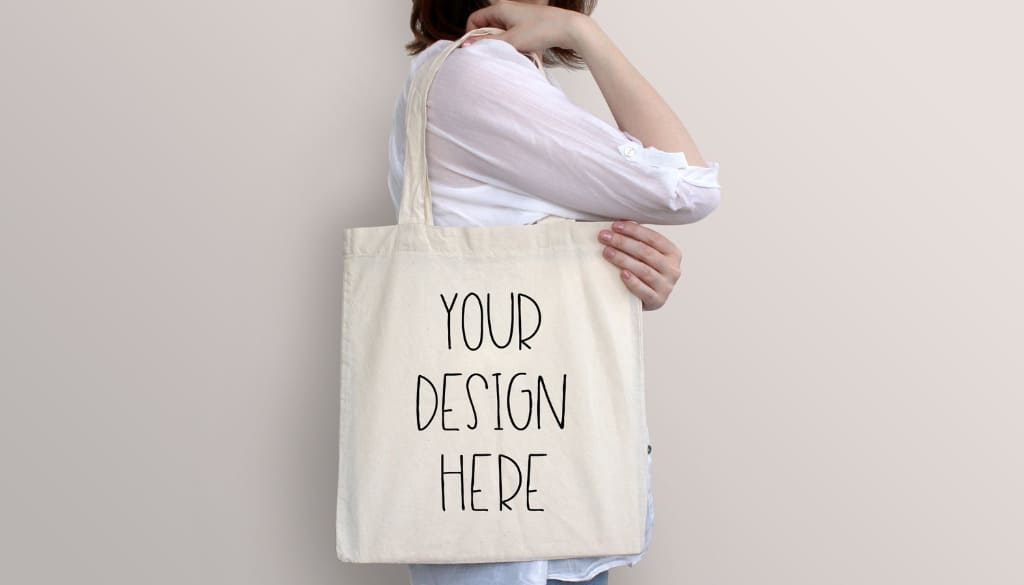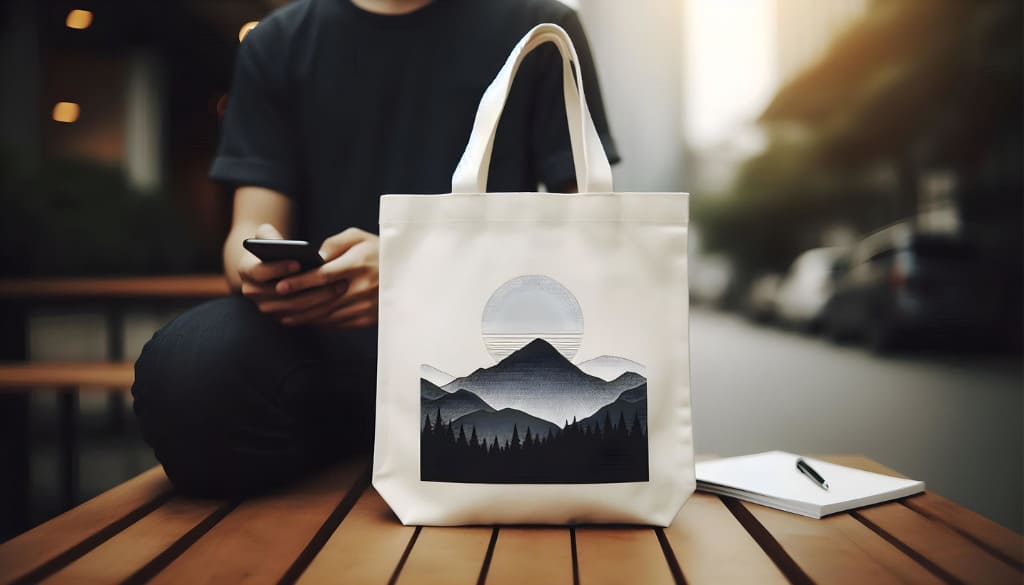Print on Demand (POD) is rapidly becoming a powerful trend in the e-commerce world, especially for sellers on platforms like Amazon, TikTok Shop, Etsy, and Shopify. With this business model, you don’t have to worry about inventory storage, mass production, or managing stock. All you need to do is create the design; once a customer places an order, the product is printed and shipped directly to them. The year 2025 promises many opportunities for POD sellers, so understanding the potential print-on-demand products, new trends, and how to choose the right products is crucial. In this article, we will explore popular and promising print-on-demand items to help you maximize your profit in 2025.
Outstanding Benefits of Selling Print-on-Demand Products
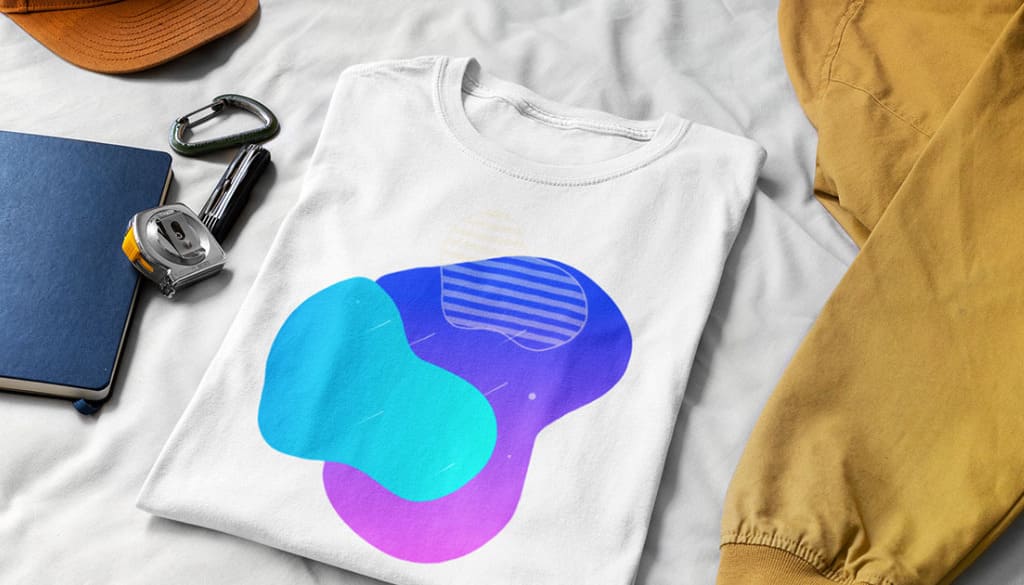
Before diving into specific products, it’s important to understand why the POD model is so attractive. Whether you’re a beginner or an experienced seller, POD offers significant advantages over traditional business models.
- Minimized Financial Risk: This is the biggest and most appealing benefit. With POD, you don’t need to invest large amounts of capital to purchase products or store inventory. Products are only manufactured when a customer places an order and pays. This eliminates concerns about unsold stock, outdated products, or storage costs. You only pay the supplier (fulfillment provider) after receiving payment from the customer.
- No Inventory or Operations Management: The entire process from printing, packaging, to shipping is handled by POD platforms or fulfillment partners. As a seller, you are relieved of complex logistics tasks. The time and effort saved can be fully focused on higher-value activities like market research, creative design, and implementing effective marketing campaigns.
- Unlimited Creative Freedom and Experimentation: You can easily test hundreds, even thousands, of different design ideas on a range of products without incurring any extra costs. If one design doesn’t sell well, simply remove it and try a new one. This flexibility allows you to quickly adapt to customer preferences and constantly changing trends.
- Easy Product Range Expansion: Once you have a successful design, applying it to other products (from t-shirts to tote bags, phone cases, or canvas prints) only takes a few clicks. The ability to scale your business and diversify your products is nearly limitless, allowing you to maximize revenue from your existing customer base.
- Global Market Reach: Most large POD providers have printing facilities and shipping partners worldwide. This means you can sell your products to customers in the U.S., Europe, Australia, or anywhere else, while still being based in Vietnam. International shipping and customs handling are taken care of by your partners in the U.S.
Best-Selling Print-on-Demand Items in Today’s Market
These are the “workhorses” that have proven their effectiveness and will continue to be the solid foundation for any POD store in 2025.
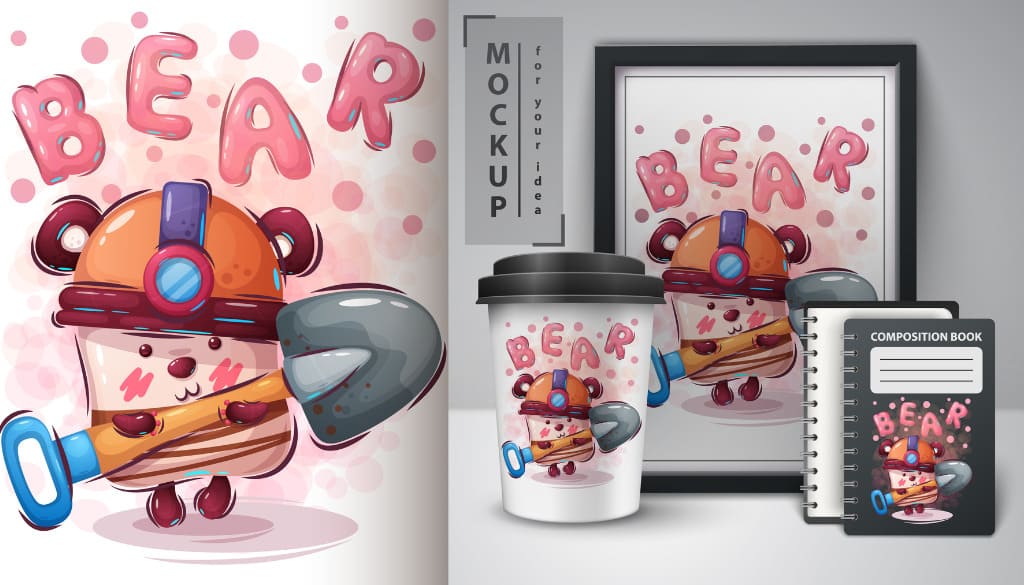
1. Apparel Sector
This remains the uncontested king of the POD industry. Clothing is not only an essential need but also a way of expressing personality, preferences, and personal views.
- T-shirts: “Timeless” and the most versatile. From basic crewneck t-shirts, oversized streetwear styles, to eco-friendly materials, t-shirts are always in high demand.
- Hoodies & Sweatshirts: Particularly booming during the Fall-Winter seasons and in colder climates. Minimalist designs, embroidered logos, or unique large prints on the back are still highly popular.
- Kid’s Apparel: An emotional and potential niche market. Parents love shopping for matching outfits, custom name prints, or cute designs for their children. Bodysuits and kids’ t-shirts are top choices.
- Athleisure: The rise of an active lifestyle has significantly driven the demand for leggings, sports bras, and joggers with unique designs. This is a fertile ground for abstract designs, nature patterns, or inspiring slogans.
2. Home & Living Sector
After the pandemic, people have become more focused on their living spaces. Personalized home decor products are becoming a major trend.
- Canvas Art & Posters (Wall Art): A simple and effective way to bring life to an empty wall. Art styles range from abstract paintings, stylized city maps, to inspirational quotes and pet portraits, each with its customer base.
- Mugs: A classic gift that never goes out of style. Mugs with humorous quotes, personalized images, or designs related to hobbies (reading, gardening, cat lovers) consistently rank among the top sellers, especially during holidays.
- Blankets & Pillows: Adding warmth and personality to living rooms and bedrooms. All-over-print blankets with unique patterns or pillows featuring pet images or chibi portraits are highly popular.
- Custom Candles: The combination of fragrance and unique label designs creates an emotional product, perfect as gifts or for personal indulgence.
3. Accessories Sector
Small details make a big difference. Accessories are where customers subtly express their style.
- Tote Bags & Backpacks: These fashionable accessories are increasingly becoming potential POD products. With unique designs and high practicality, tote bags are an excellent choice for those who love convenience and style. These products can easily stand out with bold designs that convey personal messages.
- Phone Cases: With the rapidly decreasing lifespan of smartphones, the phone case market remains vibrant. Durable, shockproof designs combined with trending patterns or personalized images always have steady demand.
- Tote Bags: Becoming a symbol of a green lifestyle and fashion. Tote bags with creative typography, artistic illustrations, or environmental messages are very easy to sell.
- Hats & Beanies: Especially those with embroidered logos or images. Embroidery provides a more premium and durable feel compared to regular prints.
- Personalized Jewelry: Necklaces, bracelets engraved with names, special dates, or coordinates of significant places are a trending and meaningful gift option that is highly sought after.
Promising New Trends in Print-on-Demand for 2025
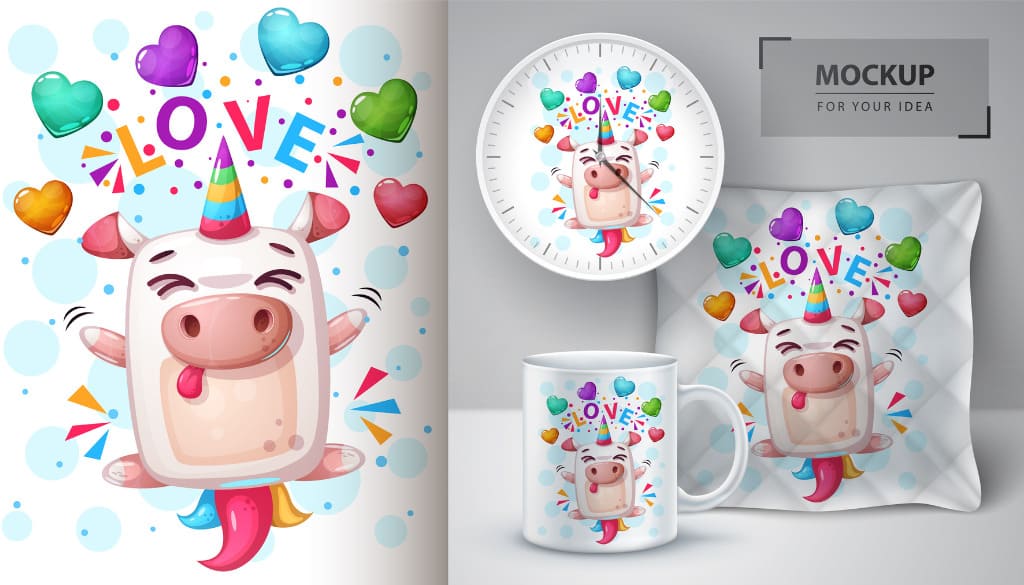
To truly break through and gain a competitive advantage, staying ahead of new trends is crucial. Here are some predictions for 2025 that sellers cannot afford to miss.
1. Sustainability
Consumers, especially Millennials and Gen Z, are becoming more concerned about the environmental impact of the products they purchase. Recent surveys show that the majority of consumers are willing to pay more for sustainable products.
Potential Products:
- Organic Cotton T-shirts: Made from cotton grown without harmful pesticides.
- Recycled Tote Bags: Showcase an environmental protection message.
Approach: Highlight the “sustainability” aspect in your product name, descriptions, and marketing campaigns. Use certifications (if available) from suppliers to increase credibility.
2. Hyper-Personalization
Personalization is no longer just about printing a name. The 2025 trend delves deeper into allowing customers to become co-creators of the products.
Potential Products:
- Star Map T-shirts: Print the star map for a specific date and location (e.g., birthday, wedding day).
- Pet Portrait T-shirts in Royal/Cartoon Style: Turn pets into unique characters.
- Products with QR Codes: Print QR codes on mugs, t-shirts, which lead to a song, music playlist, or personal video message.
- Products with User-uploaded Images: Allow customers to upload their own photos and customize layouts directly on the website.
3. DTG and UV Printing: New Technological Trends in Print-on-Demand
New printing technologies like DTG (Direct-to-Garment) and UV printing are opening up vast opportunities for POD sellers to create unique products. DTG printing allows you to create intricate, detailed designs with depth on the surface of the product, providing customers with a fresh experience. This technology makes designs stand out and enhances the aesthetic value of products.
Meanwhile, UV printing allows printing directly on hard surfaces like wood, glass, and metal, broadening your POD product range. The flexibility of printing on various materials helps you create special products that align with new trends and market demands. These products are not only visually striking but also feature durable prints that won’t fade or wear over time.
With the development of DTG and UV printing, you can create highly personalized and creative POD products, attracting customers and distinguishing yourself in an increasingly competitive market. This presents a fantastic opportunity to enhance the quality and value of print-on-demand products.
4. The Rise of Maximalism
Contrary to the minimalist trend that has dominated for many years, maximalism is making a strong comeback. This trend celebrates boldness, vibrancy, and “more is more” — more colors, patterns, and details.
Design Features:
- Use of contrasting, neon, and vibrant color palettes.
- Mixing various patterns: florals, animal prints, geometric shapes.
- Stylized, eye-catching typography.
- Collage-style designs with multiple layered images.
Applications: This trend is perfect for all-over print t-shirts, leggings, backpacks, bath towels, and shower curtains.
Suggested POD Partners
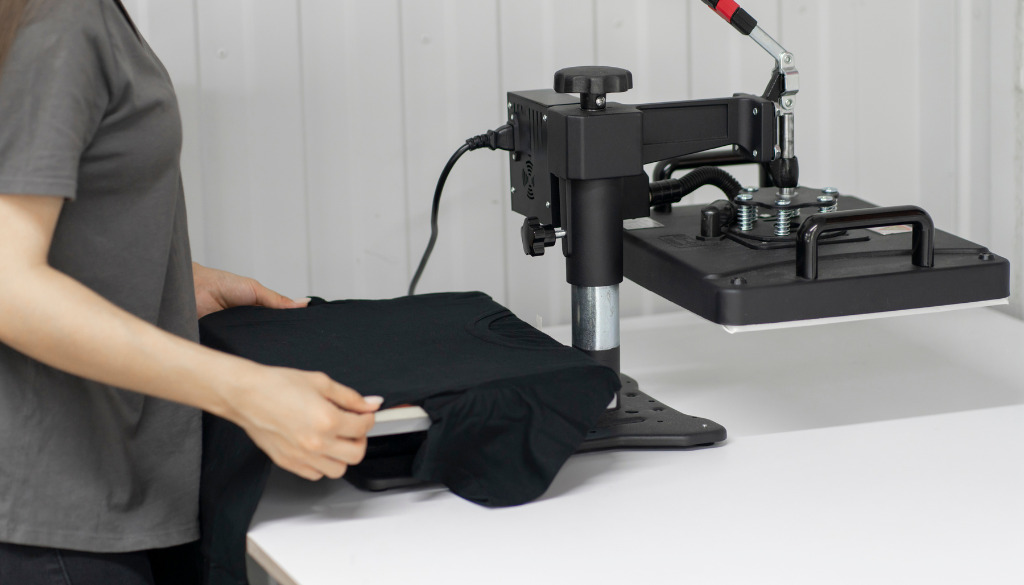
The POD business is growing rapidly, and to succeed in this field, choosing the right partner with high-quality printing is crucial. Below are some reputable print-on-demand providers that help sellers optimize production and delivery processes while enhancing product quality.
1. FlashShip
FlashShip is a leading POD platform offering high-quality printing services and supporting sellers from design to production and direct shipping to customers. One of FlashShip’s main advantages is its flexible operational system, freeing sellers from worrying about inventory or shipping. With advanced technology and optimized production processes, FlashShip offers affordable production costs and superior print quality. It’s an excellent choice for sellers who want to expand and build their brand without heavy investments in production and warehousing. FlashShip also provides 24/7 customer support to help resolve any issues that arise during the business process.
2. Printful
Printful is a popular POD platform offering a wide range of products such as t-shirts, hoodies, mugs, and tote bags. It not only supports printing but also integrates order and inventory management. Printful helps sellers easily expand their markets and increase revenue without worrying about production or shipping.
3. TeeSpring
TeeSpring is a POD platform that allows sellers to design and sell products without worrying about inventory or shipping. With a variety of products and integration with Shopify, Etsy, and Instagram, TeeSpring offers marketing tools to easily promote products. It’s an ideal choice for sellers focused on creativity and marketing.
4. SPOD
SPOD stands out with its fast production times (just 48 hours) and offers products such as t-shirts, hoodies, and accessories. SPOD integrates with Shopify and Etsy, making it easy to sell and manage orders. Additionally, SPOD provides a free online design tool for sellers.
5. Gooten
Gooten offers a wide range of POD products from clothing and accessories to home decor, and supports various printing techniques such as DTG, sublimation, and UV printing. This platform integrates with e-commerce platforms like Shopify, Etsy, and WooCommerce, making it easy to track and coordinate orders. It’s the perfect choice for sellers seeking flexibility.
POD Business in 2025 is a great opportunity to build your brand and optimize profits without requiring a large capital investment. With popular POD products like t-shirts, hoodies, mugs, and tote bags, along with new trends like 3D printing and sustainable materials, you can create attractive products that captivate customers.
Don’t forget to choose a reliable POD platform like FlashShip, where you’ll receive fast printing and shipping services, allowing you to focus on developing effective business and marketing strategies. Start today and take advantage of the POD industry opportunities in 2025!
